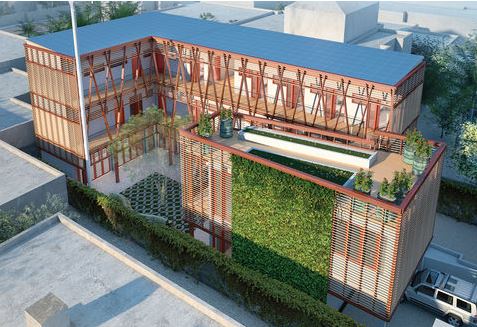The U.S. construction industry is facing new challenges due to climate change, natural disasters, and stricter building codes. Contractors and material suppliers must adapt by using resilient and disaster-proof construction methods. This approach not only protects buildings but also saves costs in the long run.
Why Disaster-Proof Construction Matters
Hurricanes, wildfires, floods, and earthquakes are becoming more frequent and severe. Builders and suppliers must focus on structures that can withstand these threats. Here’s why:
– Lower Repair Costs – Stronger buildings mean fewer damages after disasters.
– Insurance Benefits – Insurers offer better rates for disaster-resistant structures.
– Government Regulations – Many states now enforce stricter building codes.
Key Materials for Resilient Construction
1. Impact-Resistant Windows & Doors
Hurricane-prone areas need windows that won’t shatter under high winds. Suppliers should stock laminated glass and reinforced frames.
2. Fire-Resistant Materials
In wildfire zones, contractors use non-combustible siding, metal roofing, and fire-retardant treated wood.
3. Flood-Proof Foundations
Elevated homes and waterproof materials like concrete with sealants prevent water damage.
4. Earthquake-Resistant Designs
Steel frames, base isolators, and flexible piping reduce earthquake risks.
How Contractors Can Improve Disaster Resilience
1. Use Advanced Planning Tools
Before starting a project, construction takeoff services help contractors measure materials accurately. This prevents shortages and ensures the right disaster-proof materials are ordered.
2. Accurate Cost Estimation
Disaster-resistant buildings may cost more upfront but save money later. Construction estimating services help contractors balance budgets while choosing the best materials.
3. Modular & Prefabricated Construction
Factory-built components are often stronger and faster to assemble, reducing on-site risks.
The Role of Suppliers in Resilient Construction
Material suppliers play a big part in disaster-proofing buildings. They should:
– Stock High-Demand Resilient Materials – Keep fire-resistant siding, impact glass, and reinforced concrete in supply.
– Educate Contractors – Provide guides on the best materials for different disaster risks.
– Partner with Estimators – Work with construction estimating services to help builders plan cost-effective projects.
Final Thoughts
Resilient and disaster-proof construction is no longer optional—it’s a necessity. Contractors must use the right materials and planning tools like construction takeoff services to ensure projects meet safety standards. Meanwhile, suppliers should focus on providing high-quality, disaster-resistant products.
By combining smart planning, strong materials, and accurate construction estimating services, the industry can build safer, longer-lasting structures. The future of construction lies in resilience—are you ready?
